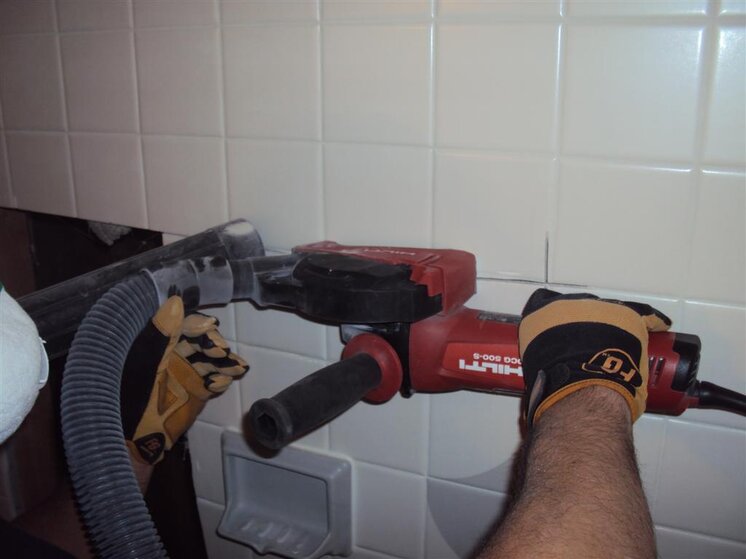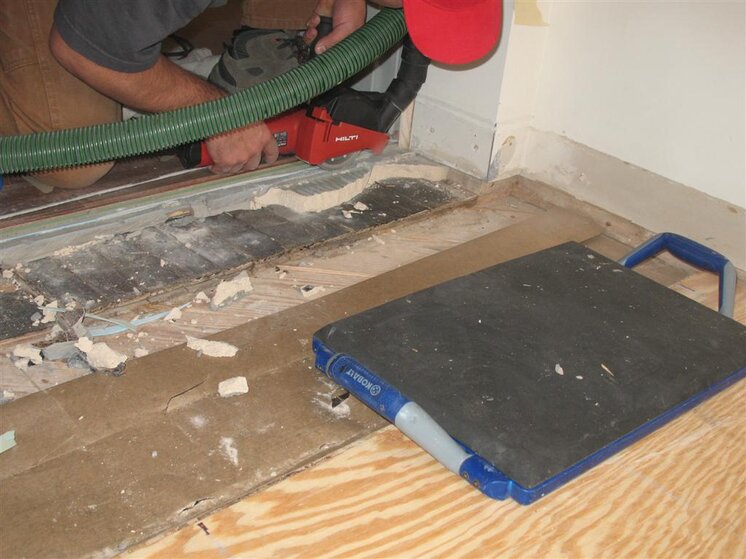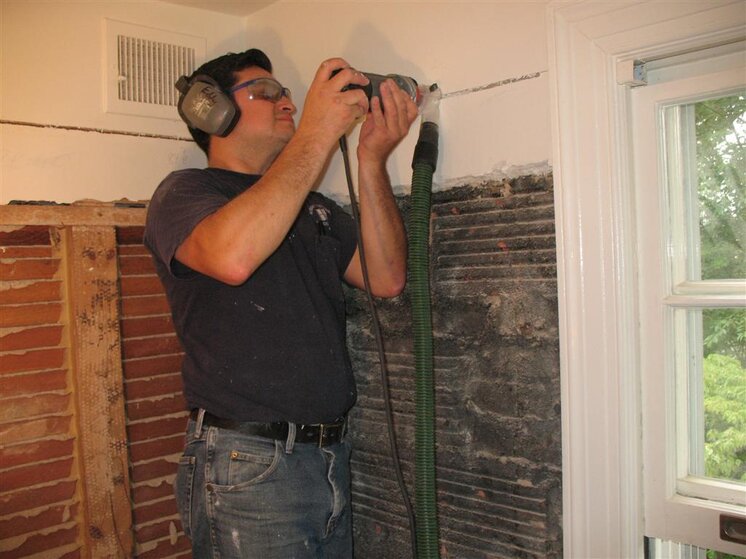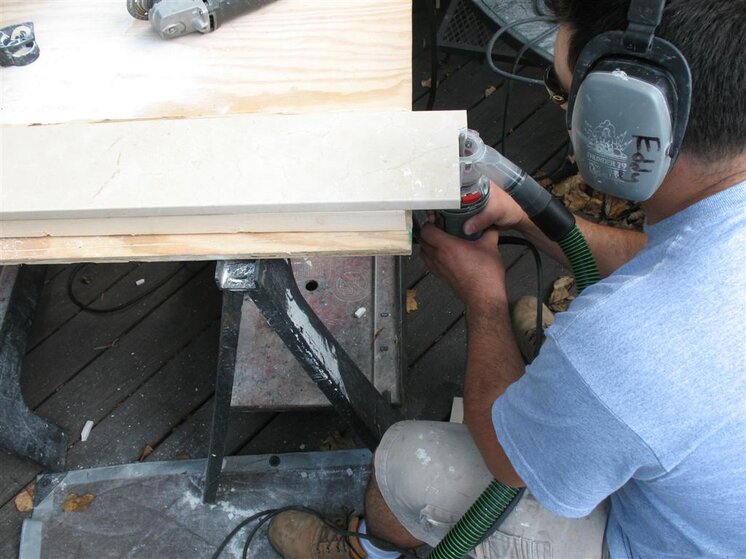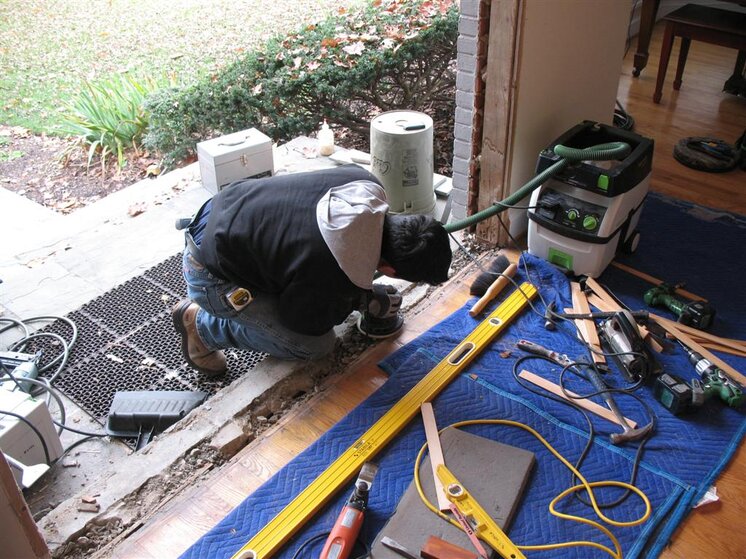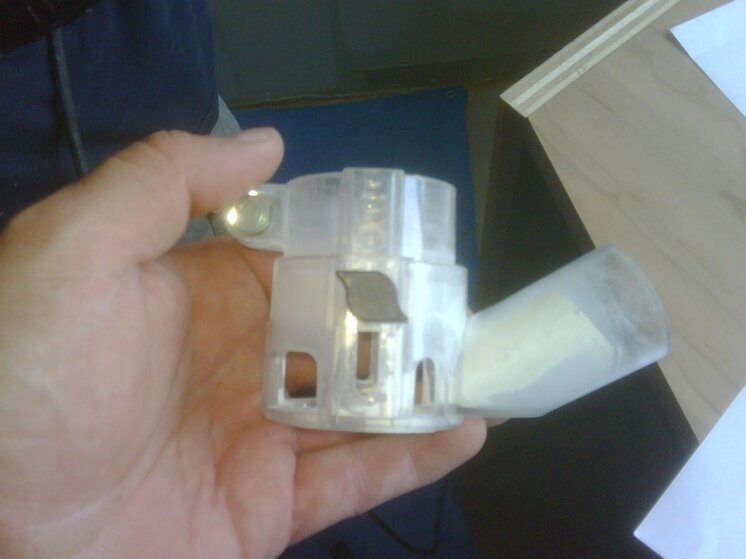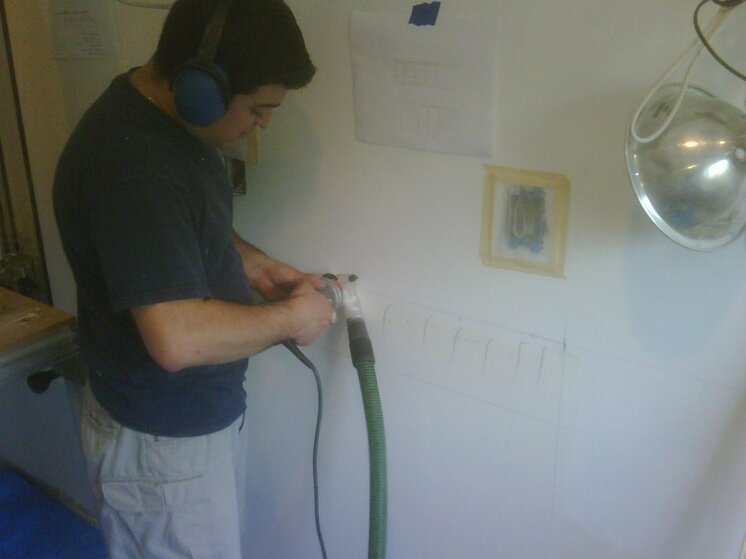R
Rob Z
I've spent a few bucks in the last year or so on tools that can be attached to dust extraction vacs. Currently, we have 2 Festool dust extractors and 2 Hilti vacs. Both are rated as having HEPA quality filtration. After doing construction work for 25 years, I've started to have some real problems (started a long time ago, actually  ) with my sinuses and respiratory system, and I'm certain the biggest reason must be from all the dust and dirt that I breathe in everyday at work. My ENT (Ear Nose Throat) doctor told me before a sinus surgery a few years ago that if things didn't change I'd likely have to quit working in the trade and GOD FORBID:mad2: get a job in an office :yikes
) with my sinuses and respiratory system, and I'm certain the biggest reason must be from all the dust and dirt that I breathe in everyday at work. My ENT (Ear Nose Throat) doctor told me before a sinus surgery a few years ago that if things didn't change I'd likely have to quit working in the trade and GOD FORBID:mad2: get a job in an office :yikes r something similar. So I figure it's cheaper than more surgery to buy some good equipment and get religion about using it and respirators and quality dust masks on the job. It's also a good thing for my men-I want them to have a reasonably healthy worksite.
r something similar. So I figure it's cheaper than more surgery to buy some good equipment and get religion about using it and respirators and quality dust masks on the job. It's also a good thing for my men-I want them to have a reasonably healthy worksite.
I bought two Abatement Technologies HEPA air cleaners. This is the model:
Crime Scene Cleanup | Meth Lab Decontamination | PRED600 Portable Air Scrubber | Capture Airborne Contaminants Decontaminate
Besides keeping the job cleaner and healthier, I've turned it into a marketing tool and I'm convinced I've gotten jobs because I tell the prospective customer that we will be setting up HEPA air cleaners on the site. Many seem to be impressed that I've planned for this and maybe that set us apart from the competitors.
We now have a demo hammer, a grinder, a Roto Zip, and several sanders that are equipped with attachments that enable us to run the HEPA vac while we are using the tool. We also have an electric concrete saw which lets us cut concrete in an enclosed space with virtually no dust getting past the suction of the vac.
Results at times are impressive. The Festool sanders and the Roto Zip achieve nearly total dust collection. You'll see in the photos that we don't even wear masks when sanding with the Festool sanders or cutting with the Roto Zip.
For the Hilit demo hammer and Hilti grinder, results are decent when we use another vac along with the vac that is attached to the tool. The chipping hammer set up is good, but the main problem is the dust that is kicked up while the tile and mortar falls and hits the floor.
Contractors here are being increasingly regulated by OSHA (Occupational Safety and Health Administration) and EPA (Environmental Protection Agency) with respect to hazardous dusts and so forth in the workplace. From what I read here on the forum, it sounds like things are much the same in the UK.
I don't mind spending the money on this equipment. We take care of it and I anticipate it all lasting for many years.
Here are some photos to show what we are doing with dust collection on our remodel jobs.
Here we are using the Hilti demo hammer to tear out the mud and tile on the walls. This installation was done in the 1930's, and the mud on the walls averaged about 1.5 inches thick. The concentrated force of the demo hammer is easier on the walls (and the plaster on the other side) than beating on it with a sledgehammer.

I bought two Abatement Technologies HEPA air cleaners. This is the model:
Crime Scene Cleanup | Meth Lab Decontamination | PRED600 Portable Air Scrubber | Capture Airborne Contaminants Decontaminate
Besides keeping the job cleaner and healthier, I've turned it into a marketing tool and I'm convinced I've gotten jobs because I tell the prospective customer that we will be setting up HEPA air cleaners on the site. Many seem to be impressed that I've planned for this and maybe that set us apart from the competitors.
We now have a demo hammer, a grinder, a Roto Zip, and several sanders that are equipped with attachments that enable us to run the HEPA vac while we are using the tool. We also have an electric concrete saw which lets us cut concrete in an enclosed space with virtually no dust getting past the suction of the vac.
Results at times are impressive. The Festool sanders and the Roto Zip achieve nearly total dust collection. You'll see in the photos that we don't even wear masks when sanding with the Festool sanders or cutting with the Roto Zip.
For the Hilit demo hammer and Hilti grinder, results are decent when we use another vac along with the vac that is attached to the tool. The chipping hammer set up is good, but the main problem is the dust that is kicked up while the tile and mortar falls and hits the floor.
Contractors here are being increasingly regulated by OSHA (Occupational Safety and Health Administration) and EPA (Environmental Protection Agency) with respect to hazardous dusts and so forth in the workplace. From what I read here on the forum, it sounds like things are much the same in the UK.
I don't mind spending the money on this equipment. We take care of it and I anticipate it all lasting for many years.
Here are some photos to show what we are doing with dust collection on our remodel jobs.
Here we are using the Hilti demo hammer to tear out the mud and tile on the walls. This installation was done in the 1930's, and the mud on the walls averaged about 1.5 inches thick. The concentrated force of the demo hammer is easier on the walls (and the plaster on the other side) than beating on it with a sledgehammer.

Last edited by a moderator:


